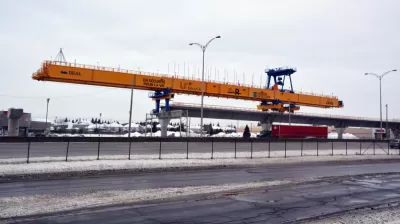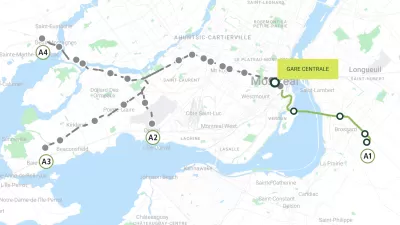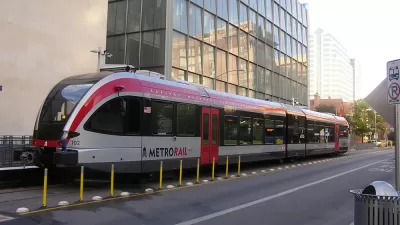Montreal officials recently announced details of a major expansion of the Réseau express métropolitain (REM).

"Montreal's light-rail network will be extended by about 30 kilometres, bringing it into Montréal-Nord and Pointe-aux-Trembles," according to an article published by CBC that preceded an official announcement of the project by a day. The extensions are added to a system still under construction, with commissioning expected in 2022.
The extension will also add a total of 23 stations to the system, with work expected to begin on both sections in 2023.
"The extension to the east would begin at Gare Centrale, where the train would run along René-Levesque Boulevard above ground all the way to Notre-Dame Street east of the Jacques Cartier Bridge," according to the article. "The tracks will then extend to Dickson Street, where they will bifurcate — one going north underground following Lacordaire Boulevard to Cégep Marie-Victorin and the other going east to Pointe-aux-Trembles along Sherbrooke Street."
More details about the project can be found in a press release from the Caisse de dépôt et placement du Québec published on December 15.
Here's how the press release describes the process that led to the announcement:
Following the Québec government’s mandate, this transit solution was identified after a thorough study of the technical and economic aspects. This study confirms that the project is viable: it meets the transportation needs of local communities, and allows CDPQ to generate the necessary returns to meet the expectations of its depositors while supporting Québec’s economic recovery in the years to come.
The projects are expected to total $10 billion—the largest-ever investment in public transit in the province of Quebec.
FULL STORY: REM to be extended to east and north ends of Montreal

Planetizen Federal Action Tracker
A weekly monitor of how Trump’s orders and actions are impacting planners and planning in America.

Chicago’s Ghost Rails
Just beneath the surface of the modern city lie the remnants of its expansive early 20th-century streetcar system.

San Antonio and Austin are Fusing Into one Massive Megaregion
The region spanning the two central Texas cities is growing fast, posing challenges for local infrastructure and water supplies.

Trump Distributing DOT Safety Funds at 1/10 Rate of Biden
Funds for Safe Streets and other transportation safety and equity programs are being held up by administrative reviews and conflicts with the Trump administration’s priorities.

German Cities Subsidize Taxis for Women Amid Wave of Violence
Free or low-cost taxi rides can help women navigate cities more safely, but critics say the programs don't address the root causes of violence against women.

New Atlanta Law Requires ‘Cool Roofs’
Painting roofs with reflective coatings can significantly reduce indoor temperatures and improve energy efficiency, sometimes at a lower cost than traditional roof treatments.
Urban Design for Planners 1: Software Tools
This six-course series explores essential urban design concepts using open source software and equips planners with the tools they need to participate fully in the urban design process.
Planning for Universal Design
Learn the tools for implementing Universal Design in planning regulations.
planning NEXT
Appalachian Highlands Housing Partners
Mpact (founded as Rail~Volution)
City of Camden Redevelopment Agency
City of Astoria
City of Portland
City of Laramie





























